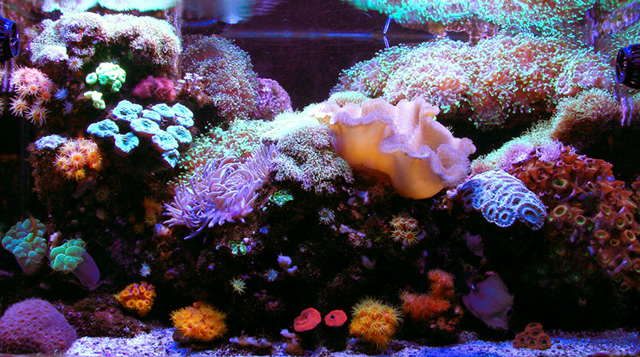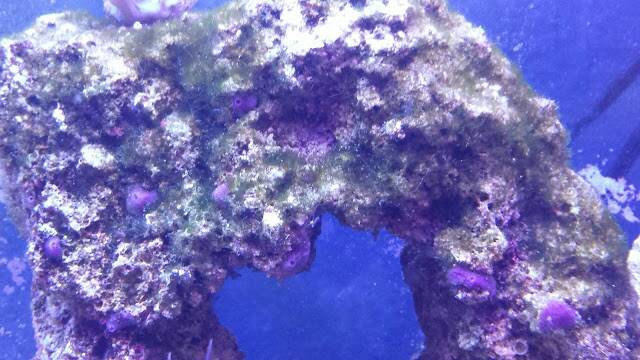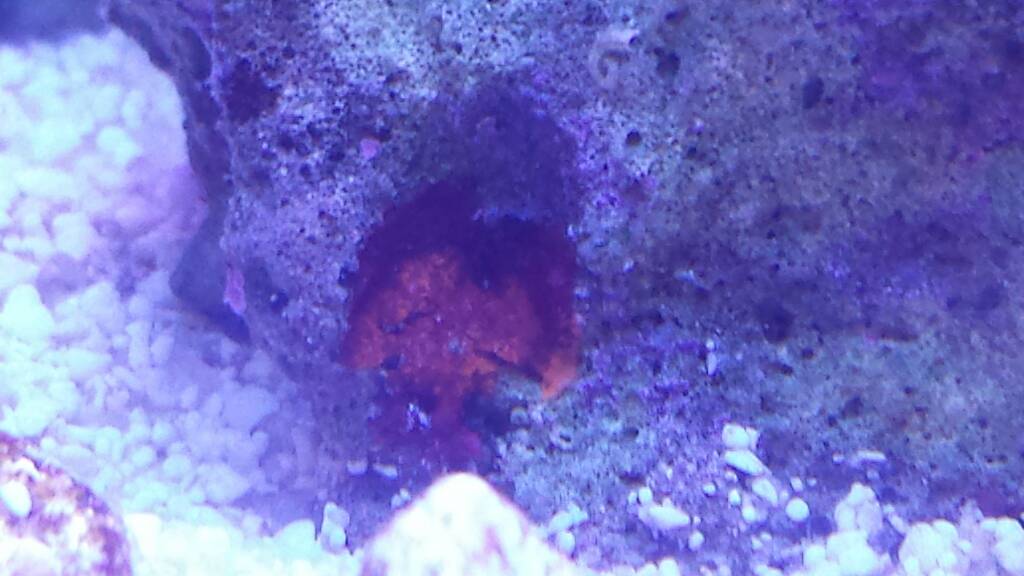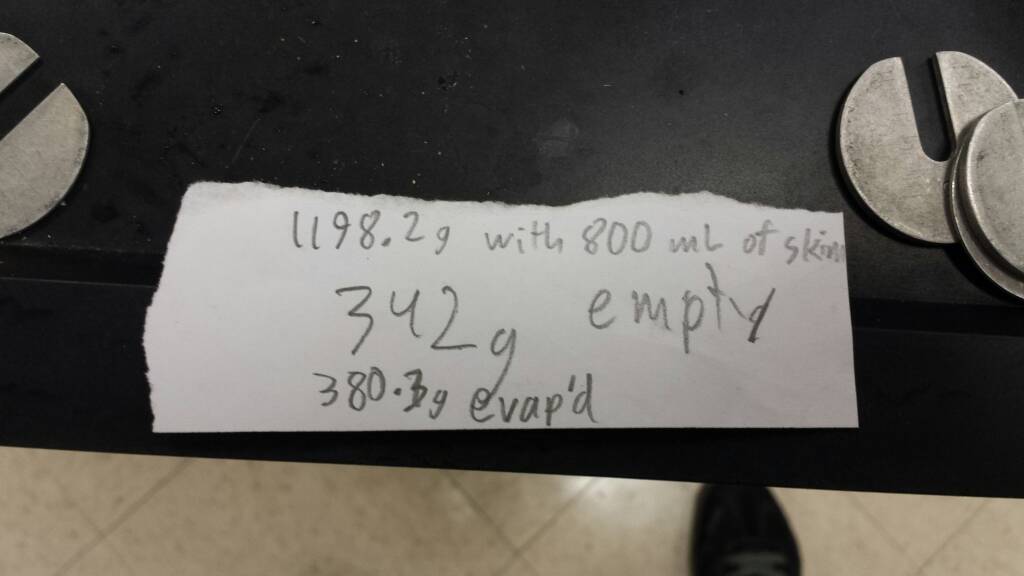About 7 years ago I saw a cool "freshwater" puffer fish for $5 in walmart(!) and thought he looked awesome.
I put him in a planted aquarium: amazing personality, and will eat most anything, researched him. Green Spotted Puffer. Not actually freshwater, brackish water. So I gradually over weeks move the tank to brackish, discover that there's almost no available brackish plants, tank would be boring. Learn that these puffers are happily kept at full marine salinity, and you can have lots of cool things at full marine salinity, except what the puffer eats - which is just about everything.
...
So I've had this 60 gallon Reef Tank in my classroom in some fashion for about 6 years. After about 4 years, the puffer died, which allowed me to start thinking about much more interesting things that can be in a reef tank.
In the past year I've finally upgraded piece by piece, somewhat passable lights first, then supplemental lights for color, quality test kits, element dosing, added a fuge, got a real skimmer, built a sump etc. Now I feel like I have what I need to keep the things I am interested in alive, essentially anything except sps.
A goal of my tank is as much life and diversity as possible. It's amazing how I can watch my tank daily for a whole year, and yet see something new even after that.
I am a science teacher, but my training is physics, so I've possibly learned more about chemistry and biology from my tank than from any classes. And if I ever get bored, I can just take a sample from somewhere in my tank and throw it on a microscope slide: boom - freaking alien world. BTW more convincingly alien life on a microscope slide than in any sci-fi production.
The point of this thread is to try to figure out a few puzzles,
I put him in a planted aquarium: amazing personality, and will eat most anything, researched him. Green Spotted Puffer. Not actually freshwater, brackish water. So I gradually over weeks move the tank to brackish, discover that there's almost no available brackish plants, tank would be boring. Learn that these puffers are happily kept at full marine salinity, and you can have lots of cool things at full marine salinity, except what the puffer eats - which is just about everything.
...
So I've had this 60 gallon Reef Tank in my classroom in some fashion for about 6 years. After about 4 years, the puffer died, which allowed me to start thinking about much more interesting things that can be in a reef tank.
In the past year I've finally upgraded piece by piece, somewhat passable lights first, then supplemental lights for color, quality test kits, element dosing, added a fuge, got a real skimmer, built a sump etc. Now I feel like I have what I need to keep the things I am interested in alive, essentially anything except sps.
A goal of my tank is as much life and diversity as possible. It's amazing how I can watch my tank daily for a whole year, and yet see something new even after that.
I am a science teacher, but my training is physics, so I've possibly learned more about chemistry and biology from my tank than from any classes. And if I ever get bored, I can just take a sample from somewhere in my tank and throw it on a microscope slide: boom - freaking alien world. BTW more convincingly alien life on a microscope slide than in any sci-fi production.
The point of this thread is to try to figure out a few puzzles,
- what wavelengths of light I'm missing that causes Red/Orange/Yellow to not "pop" in my tank the way it does under some other LED systems (Kessil, Reefbreeders, etc)
- reduce algae in the DT to not noticeable levels
- how to increase the amount of available nutrition in the water to support diversity of life including less demanding NPS
- how to manage amounts of light, flow, C, N, P, skimming, and dosing, to figure out what to keep in excess and what to zero out to help achieve the two items above
- how does "old tank syndrome" relate to above? why my first slowly growing cyano event happens 6 years in?
- how can natural sunlight in the display tank be used without burning corals/triggering algae outbreak.
- how is aquarium water meaningfully different than Natural Sea Water in terms of our ability to keep specimens healthy (in some ways it's dirtier, in other ways it's more sterile)
- How to trigger sun polyp feeding response, then feed in a not time-consuming way.
- This tank is my favorite that I've ever seen. Wonder how much of it I could replicate. Aug 2015 ToTM by rhdoug.









